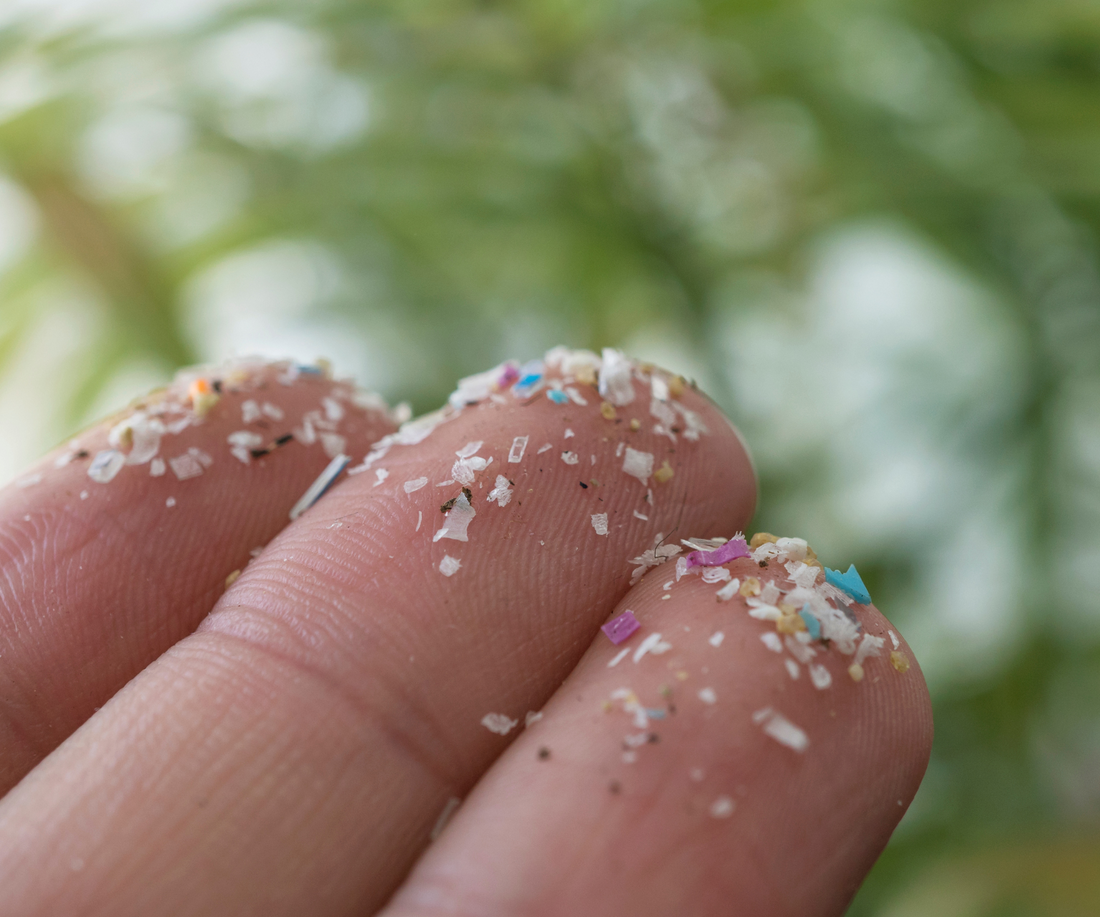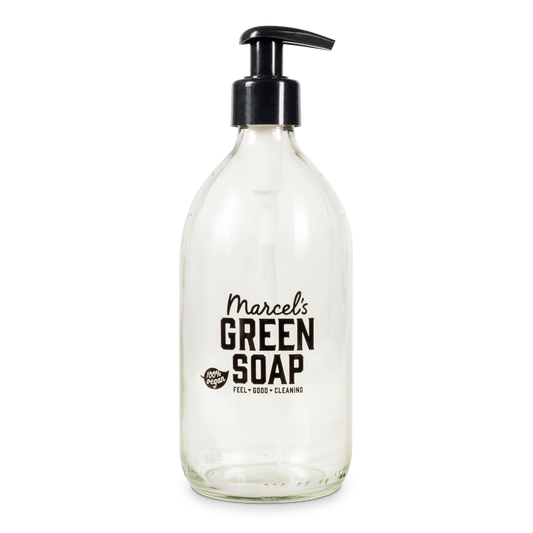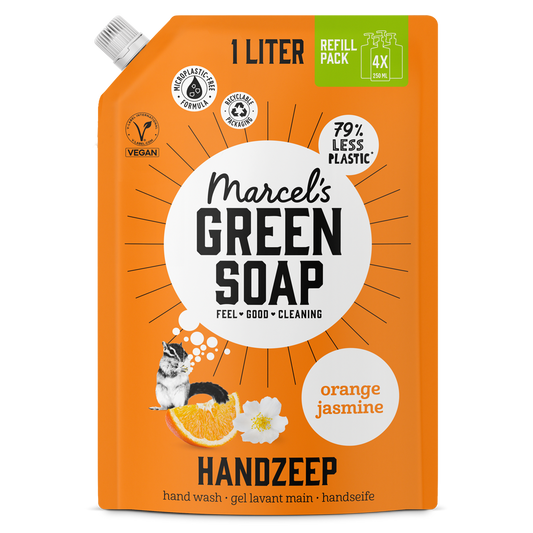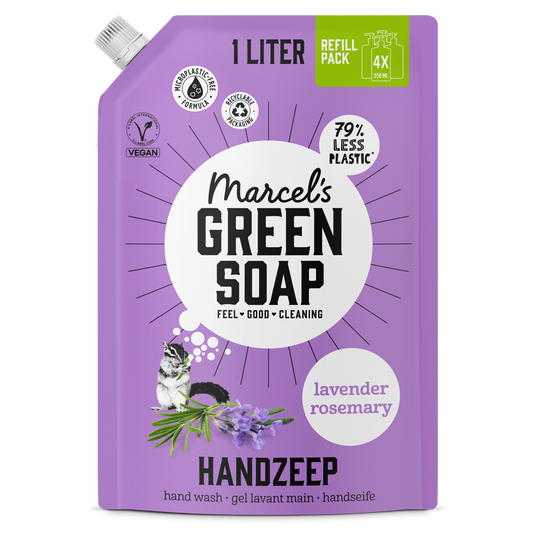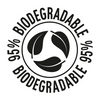This month we are taking a closer look at the impact of microplastics on our health and the climate. What exactly are microplastics? How can you recognize microplastics on the label? And most importantly: how do you banish them from your life?
How are microplastics created?
To answer the question: what are microplastics?, it is best to first answer the question: how are microplastics created? Plastic is interwoven with our lives. From the clothes you wear to the couch you sit on. Almost everything you use every day contains plastic and wears out. And it is precisely because of this wear that tiny pieces of plastic – yes, microplastics – are released that start to float around. Because plastic hardly decomposes, these particles continue to circulate in the air, on land and in the sea for decades.
Another way microplastics are created is through plastic litter. Every year, 11 million tons of plastic end up in the sea. This plastic drifts – via rivers and ocean currents – to the plastic soup. Along the way, the plastic pulverizes into ever smaller particles that are seen as food by fish, causing the plastic to end up in our food chain. Not good.
And then this: there is often talk about microplastics and nanoplastics. Microplastics are smaller than 5 mm, nanoplastics are even smaller (1 to 1000 nanometers) so you can't see them with the naked eye. It is precisely this last category that is the biggest problem for our health.
|
Recent research on microplastics Recent research - published by National Geographic - has shown that the sharp increase in microplastics in our environment is not only visible in the sea - in 2023 there were more than 10 times as many microplastics floating in the sea as in 2005 - but also in our brains. In the brain?! Yes, because microplastics are in the air, we breathe them in. In 2016 and 2024, researchers investigated the amount of micro- and nanoplastics in the brain and concluded that the total mass of plastic in the brain had increased by about 50 percent. The exact consequences of this for our health are still being investigated. |
Microplastics in care products
Believe it or not, microplastics are sometimes deliberately added to cosmetics, care products and cleaning products to 'optimise' their structure or effectiveness, for example. So it could be that you are brushing your teeth with bits of plastic every morning. Not a nice idea, right? Fortunately, there are more and more products on the market with a microplastic-free formula - such as Marcel's Green Soap - so you can make a conscious choice.
How to recognize microplastics on the label
Do you want to be sure that the product you buy does not contain microplastics? Then check the list of ingredients. Unfortunately, there are countless names for 'microplastics', which does not make it easier for you to choose microplastic-free products. If you see something with 'acrylate', 'acryl' or 'poly' on the list of ingredients, you can be sure that it contains microplastics. You can also always check whether there is a quality mark on the packaging, such as the 'Zero Plastic Inside' quality mark that you can also find on our soapies. Other quality marks are: Demeter, NaTrue, European Ecolabel, Cosmos Organic and Nordic Ecolabel.
Extra tip: scan the product with the Beat The Microbead app to make sure it does not contain microplastics.
What can you do to combat microplastics?
After reading this blog, you will of course want to banish microplastics from your life altogether. Unfortunately, we can no longer remove what circulates in the air, on land and in the sea. But together we can ensure that the increase in microplastics is stopped as much as possible. Therefore, a few tips:
- Separate your plastic waste
- Buy packaging-free as much as possible
- Use refills
- Buy microplastic-free products
- Choose clothing made from natural materials
- Use a microplastic filter for the washing machine
And one last tip for your own health: ventilate your house regularly.
Sources:
https://www.consumentenbond.nl/duurzamer-eten/microplastics
https://www.wwf.nl/wat-we-doen/focus/oceanen/vuil/plastic-soep
https://www.nationalgeographic.nl/wetenschap/a63663242/microplastics-hersenen


